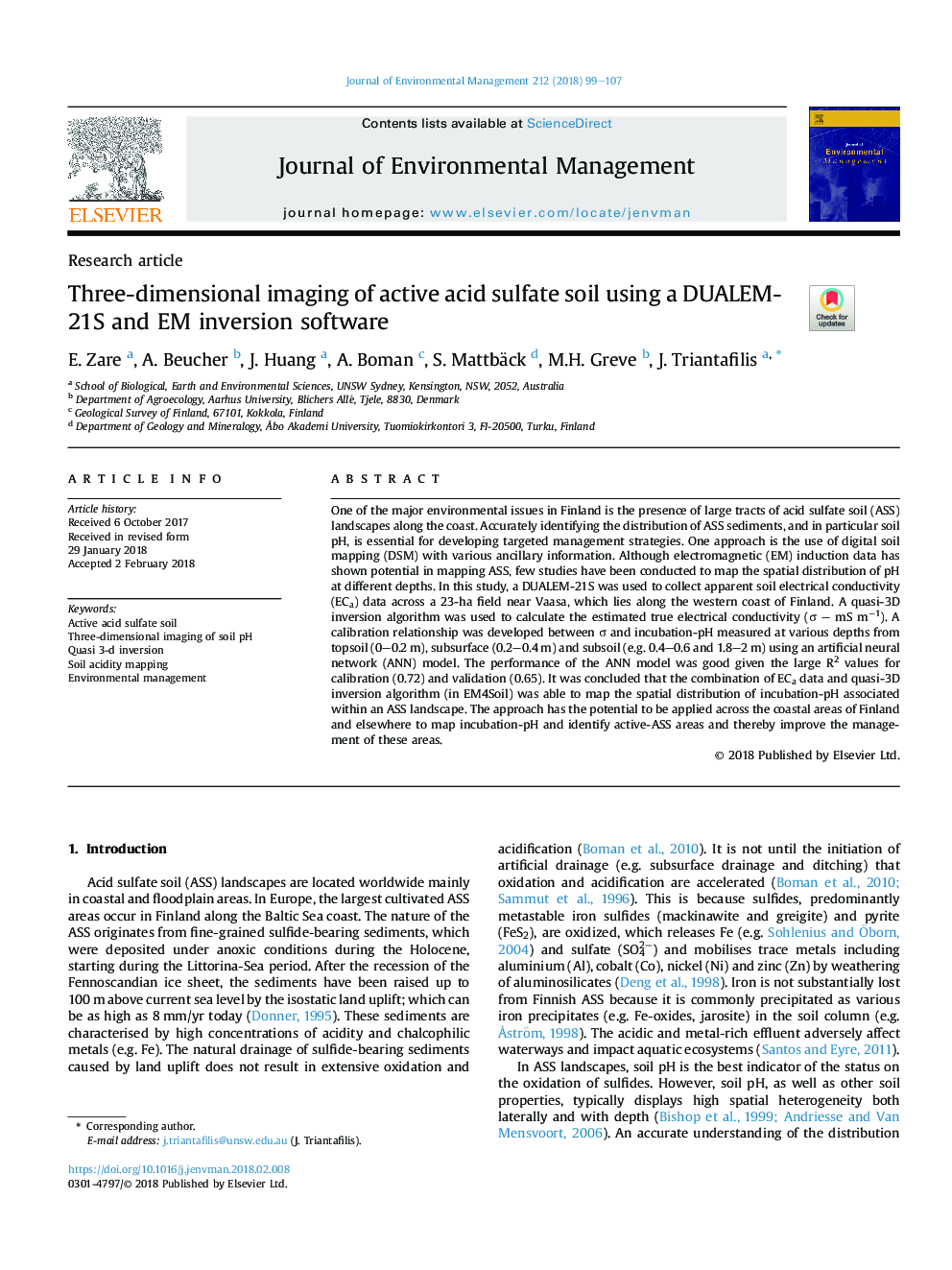| Article ID | Journal | Published Year | Pages | File Type |
|---|---|---|---|---|
| 7477892 | Journal of Environmental Management | 2018 | 9 Pages |
Abstract
One of the major environmental issues in Finland is the presence of large tracts of acid sulfate soil (ASS) landscapes along the coast. Accurately identifying the distribution of ASS sediments, and in particular soil pH, is essential for developing targeted management strategies. One approach is the use of digital soil mapping (DSM) with various ancillary information. Although electromagnetic (EM) induction data has shown potential in mapping ASS, few studies have been conducted to map the spatial distribution of pH at different depths. In this study, a DUALEM-21S was used to collect apparent soil electrical conductivity (ECa) data across a 23-ha field near Vaasa, which lies along the western coast of Finland. A quasi-3D inversion algorithm was used to calculate the estimated true electrical conductivity (Ï - mS mâ1). A calibration relationship was developed between Ï and incubation-pH measured at various depths from topsoil (0-0.2â¯m), subsurface (0.2-0.4â¯m) and subsoil (e.g. 0.4-0.6 and 1.8-2â¯m) using an artificial neural network (ANN) model. The performance of the ANN model was good given the large R2 values for calibration (0.72) and validation (0.65). It was concluded that the combination of ECa data and quasi-3D inversion algorithm (in EM4Soil) was able to map the spatial distribution of incubation-pH associated within an ASS landscape. The approach has the potential to be applied across the coastal areas of Finland and elsewhere to map incubation-pH and identify active-ASS areas and thereby improve the management of these areas.
Keywords
Related Topics
Physical Sciences and Engineering
Energy
Renewable Energy, Sustainability and the Environment
Authors
E. Zare, A. Beucher, J. Huang, A. Boman, S. Mattbäck, M.H. Greve, J. Triantafilis,
